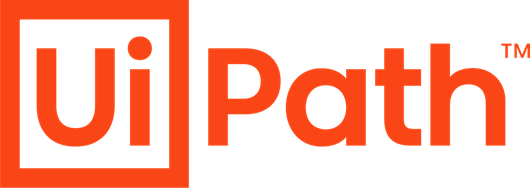Project: Graduation projects at UiPath Process Mining
Description

UiPath is the market leader in Robotic Process Automation (RPA) and is an end to end business automation platform. An important component of automation is being able to understand the process using process mining. The following assignments are related to UiPath Process Mining (formerly ProcessGold), which is based in Eindhoven, the Netherlands. Research challenges range from a number of different topics such as process mining and visualization. UiPath Process Mining enables businesses to analyze, understand, and continuously monitor their own processes based on data by combining data extraction, process mining techniques, and visual analytics. We are constantly improving our product, and in this context, we offer master graduation projects and internships on a wide variety of topics–see below. In all projects, the student/intern should be able to work out the problem definition in collaboration with UiPath and the university supervisor, come up with a conceptual solution, and, where applicable, realize the solution in a proof-of-concept, preferably in the UiPath Process Mining platform. Graduation projects at UiPath will typically focus on further improving and expanding on the toolsets provided to the users. In other words, projects at UiPath Process Mining will not focus on applying process mining or visualization techniques, but on improving existing techniques or developing new techniques to tackle challenging business problems. The graduation projects at UiPath offer the student a combination of theoretical research and practical application, while working at UiPath offers the student a unique insight in process mining in business and shows what a business automation platform developer looks like from the inside. If you are interested in one of the below master projects or have any questions about the available topics, please send your application, including your CV, to processmininggraduation@uipath.com.
For an up-to-date list of available projects, see the UiPath Student Projects website: https://view.highspot.com/viewer/66ab99d227ffd1e0962c760f
The available assignments are divided into a number of subcategories, but are not exclusively related to those subcategories. For example, most process mining assignments will have some visualization component and vice versa.
Object Centric Process Mining Visualization
Object Centric Process Mining (OCPM) promises to address several issues of classical Process Mining. In essence, OCPM adds an extra dimension by enabling the analysis of the process of multiple objects/entities at the same time, while classical Process Mining forces us to focus on only one. While this is extremely powerful and valuable to our users, it also creates a visualization challenge. How should we visualize the life-cycles of these objects/entities? How do we keep the process interpretable? These are just some of the questions we aim to answer. The goal of this project is to build a (process graph) visualization prototype such that the OCPM visualization challenges are addressed.
Expected output: An Object Centric Process Mining visualization prototype.
Type of project: Programming (mostly Typescript), process mining, graph layout algorithms, visualization.
Concept Drift
Business processes are no static organisms. They evolve and change whilst their executions are recorded in event logs. We would like to visualize how a process changes over time. Through analysis of the event logs containing these changes, Concept Drift, or more specifically Process Drift may be detected. This detection contributes to process analysis and process monitoring. It furthermore increases awareness of (unwanted) aspects evolving into the process. The goal of this project is to develop a Concept Drift identification technique, and to build a visualization which allows the user to understand and analyze the Concept Drift of their business process.
Expected output: A prototype for Concept Drift identification and visualization.
Type of project: Programming (Typescript and some C#), some process mining, and visualization.
Context-based & cancellation activity visualization
Context based activities are activities that influence the control-flow of the process, but are not part of the control-flow. Having identified these activities , we would like to formulate a way to visualize their impact on the control-flow of the process, without visualizing them as part of the control-flow. Furthermore, we want to investigate the detection and visualization of cancellation activities, which halt the process flow through abrupt exceptional behavior.
Expected output: A prototype component in the UiPath Process Mining platform to visualize context-based activities and automatically identify and visualize cancellation activities.
Type of project: Programming (C# and Typescript), visualization, some process mining.
Semantic zoom on process graphs and models
One of the common challenges in process visualization is the complexity and size of process graphs and process models. Various filter, zoom and summarization techniques exist, but ultimately fail to provide a holistic overview of the process and its complexities at the various levels that are visualized. In this project, we want to explore a semantic zoom on process graphs and models, to investigate the best way of capturing and maintaining different levels of information during the exploration of process graph visualizations. For instance, clustering techniques for grouping process attributes could be leveraged to summarize complex data.
Expected output: A prototype implementation of semantic zoom on process graphs and models in the UiPath Process Mining platform.
Type of project: Programming (Typescript, potentially C#), visualization, some process mining.
Intuitive graph-based interaction for data analysis.
While the process graph provides a nice overview of a process, we can use interactivity to allow users to do complex analysis on the underlying data, without adding too much cognitive complexity, e.g. if a node in a process graph has 5 interactive buttons, it’s already quite complex. Dealing with multiple types of interactions will need to be handled gracefully. This will be bit of an exploratory assignment where several prototypes may be built and user tested. An example of such an interaction could be visual filtering: make filtering a more interactive experience, e.g. when creating a from-to filter, have the user select a from node and highlight all reachable to nodes for the user to select.
Expected output: A prototype implementation of intuitive graph-based interaction.
Type of project: UX, Programming (Typescript, potentially C#), visualization, some process mining.
Resource perspective visualization
In Process Mining, the resource perspective focusses on the people, machines and other resources employed in the end-to-end flow of the process. Cases and tasks are handed over between resources, resources have certain availabilities, and resources often govern when what can happen. In this project, we want to mine and visualize the resource perspective of event data, giving insight into the resources in ones business.
Expected output: A prototype dashboard that shows the mined resource perspective of event data.
Type of project: Programming (Typescript, some C#), visualization, some process mining.
Decision perspective visualization
In Process Mining, the decision perspective focusses on decisions made, and the motivations thereof. Many different flows exist in processes, and certain paths and tasks are chosen with motivation. Gaining insight into these decisions can help users understand better why their process flows as it does. In this project, we want to explore visualizing the decision perspective, showcasing the decisions made in the process, the motivation for these decisions, and the results.
Expected output: A prototype dashboard that shows the mined decision perspective of event data.
Type of project: Programming (Typescript, some C#), visualization, some process mining.
Root Cause Analysis visualization
In the UiPath Process Mining Root Cause Analysis (RCA) dashboard, users can explore the root causes for certain (unexpected) results or influences on their process. This typically requires the user to set precise parameters, and explore the RCA graph in an unguided fashion. To ease this process, we would like to explore a visualization overhaul where the user is guided towards insights in a visual manner.
Expected output: A prototype visualization of an improved, guided, Root Cause Analysis.
Type of project: Programming (Typescript, potentially C#), visualization, some process mining.
References
[1] Object Management Group. Business process model and notation (bpmn) version 2.0.2. Technical report, 2014.
[2] Dennis Brons, Roeland Scheepens and Dirk Fahland. Striking a new Balance in Accuracy and Simplicity with the Probabilistic Inductive Miner.3rd International Conference on Process Mining (ICPM), 2021, pp. 32-39.
[3] Robin J.P. Mennens, Roeland Scheepens, and Michel A. Westenberg. A stable graph layout algorithm for processes. Eurographics Conference on Visualization (EuroVis), June 2019.
Details
- Supervisor
-
 Stef van den Elzen
Stef van den Elzen
- Secondary supervisor
-
RSdr.ir. Roeland Scheepens (UiPath)
- External location
- UiPath Process Mining (Eindhoven)
- Interested?
- Get in contact